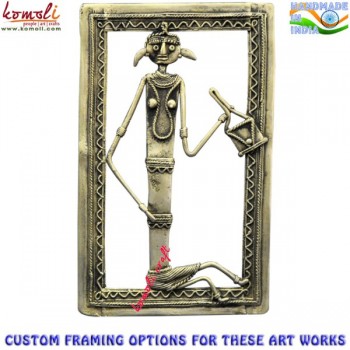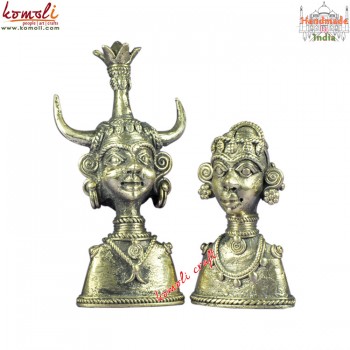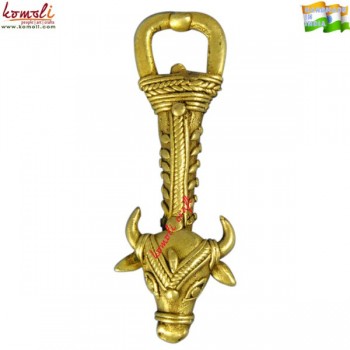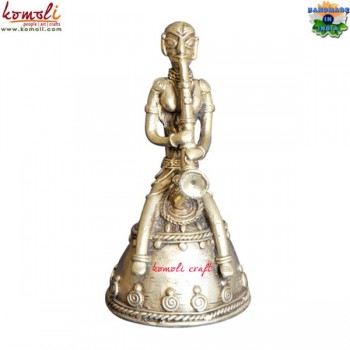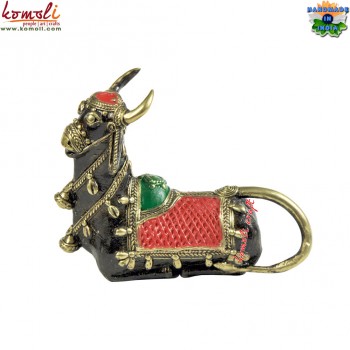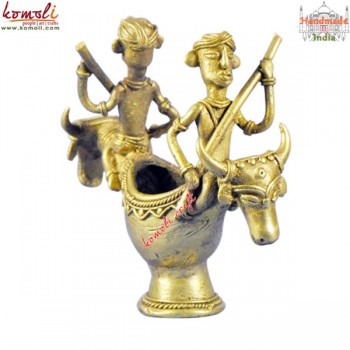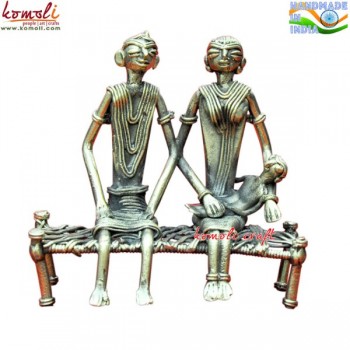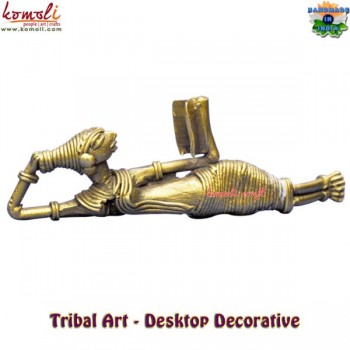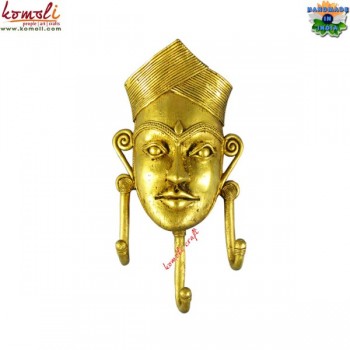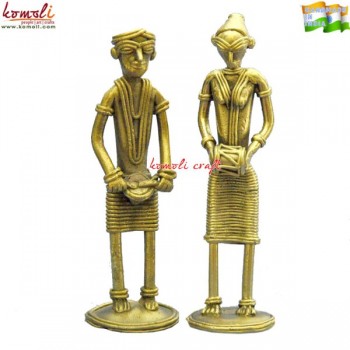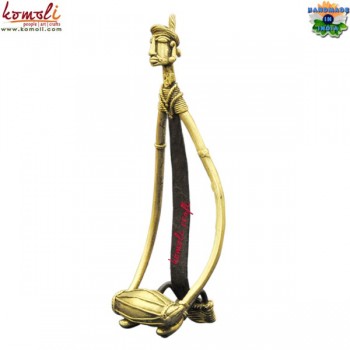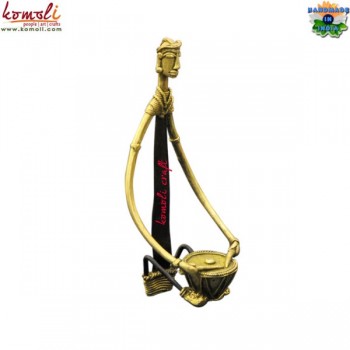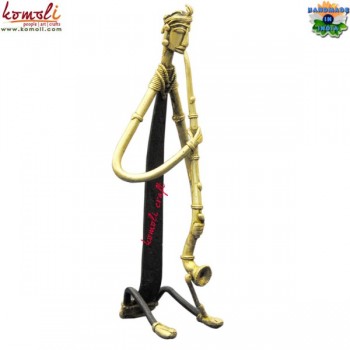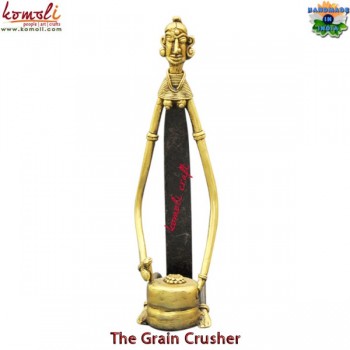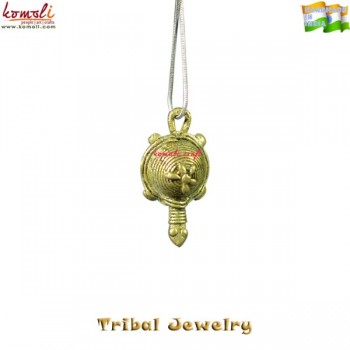Dhokra

Dhokra Art – Bell Metal Casting – Lost Wax Casting – is not only beautiful but unique also. These artifacts are made from brass and are unique as each piece is made from a new mold which is lost in the process. So every Dhokra artifact is unique in the world. It also, does not have any joints. It comes in one piece as a whole. Since it is completely handcrafted and therefore, the shapes are not perfect, and the symmetries are not mirror image produced like in machine made products.
Dhokra Art - Lost Wax Casting has got its name associated with the French name of “cire perdue” is the process by which a metal (such as silver, gold, brass or bronze) sculpture is cast from an artist's sculpture. Lost-wax casting was widespread in Europe until 18th century, when a piece-mold process came to predominate.
In the lost-wax (or cire perdue) process as used by artisans, a figure is first roughly modeled in clay. Over this inner clay core, the craftsman applies a layer of beeswax. This wax is applied in thin threads that are pressed through a bamboo tube or a syringe or other device. Sometimes the threads are criss-crossed into a lattice pattern, giving a characteristic appearance to the final figure. At some places on the figure, the worker may use a hot knife to smooth the surface of the threads.
Once the wax is modeled into a final form, two layers of clay are placed on top. First, a thin clay paste is added and allowed to dry; then a layer of rougher clay mixed with rice husks is added and also allowed to dry. Thus, the wax now forms a mold for the metal that will subsequently comprise the cast statue. A hole is cut through the top of the clay coverings to allow for the entrance of the molten metal. Likewise, a channel is made in the bottom to let the wax flow out of the mold. Metal wires are then tied around the whole construction to keep it intact.
Molten brass or bell metal is gradually poured into the mold through the top hole. The hot metal melts the wax, which flows out the exit hole in the bottom. The heat of the metal also chars the clay. After the metal has cooled, perhaps overnight, the wires are untied or cut and the outer layers of clay are chipped away. The inner core of now blackened clay may be scraped away through a hole or holes in the figure, or it may be left intact, giving weight to the cast piece. (This blackened clay core is often visible through holes in the castings.) When the metal figure is revealed after the outer layer of clay is removed, additional scraping, chiseling, or polishing may subsequently be done to the cast figure, according to the craftsman's intentions for the final form. Apart from beautiful statues and Folk motifs Dhokra art is also used for making Jewellery and other small items.
The traditional profiles and captivating designs of these Dhokra artifacts will provide timeless beauty to any home. Each and every piece of this captivating art is made with so much devotion, care, patience and skill that each artifact is valuable in itself.
We at Komoli work with several Artisans practicing this Art form and are spread over in the states of Chattisgarh, Madhya Pradesh, Odisha, Jharkhand and Pashim Banga.
Musical Maestro - Amazing 3D Wall Mural With Dhokra Jali Design - Custom Framing Options
..
$0.00 Ex Tax: $0.00
Princely Couple - Raja Rani of Bastar - Bell Metal Lost Wax Casting Sculpture
..
$0.00 Ex Tax: $0.00
Red Bull - Bulls Head - Lost Wax Casting Amazing Bottle Opener - Hand Crafted
..
$0.00 Ex Tax: $0.00
Shahnai Tribal Bell - Dhokra Lost Wax Casting Home Decoration Statue Tribal Figurine
..
$0.00 Ex Tax: $0.00
Symbol of Devotion - "Nandi" - Colorful Dhokra Artifact Lost Wax Casting Statue
Nandi (Sanskrit: नन्दि) is the guardian deity of Kailash, the home of Lord Shiva..
$0.00 Ex Tax: $0.00






 +91 86885 66654
+91 86885 66654
 +1 732 318 0345
+1 732 318 0345
-1920x590.jpg)



